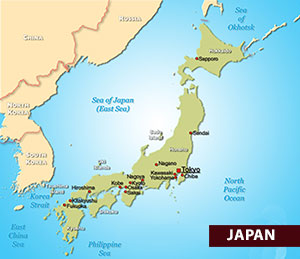Pharmacoeconomic Guidelines: Japan
Country/Region: Japan

PE Guidelines
Guideline for preparing cost-effectiveness evaluation to the central social insurance medical council (version 3.0 2022)
PDF in English
PDF in English
Additional Information:
Shiroiwa T, Fukuda T, Ikeda S, et al. Development of an Official Guideline for the Economic Evaluation of Drugs/Medical Devices in Japan. Value Health 2017;20(3):372-8.
Information current as of Saturday, August 13, 2022
Key Features
| Key Features | |
|---|---|
| Type of Guidelines | PE Guidelines |
| Title and year of the document | Guideline for preparing cost-effectiveness evaluation to the central social insurance medical council (version 3.0, 2022) |
| Affiliation of authors | Prepared by: Study Team for “Establishing Evaluation Methods, Data Standardization, and Assessment Systems Toward the Application of Economic Evaluation of Healthcare Technologies to Governmental Policies” (Team Leader: Takashi Fukuda); Supported by Health and Labour Science Research Grants (Strategic Integrated Scientific Research Project) |
| Purpose of the document | This guideline presents methods of analysis to prepare for costeffectiveness evaluations to the Central Social Insurance Medical Council. |
| Standard reporting format included | Not included |
| Disclosure | |
| Target audience of funding/ author's interests | |
| Perspective | Public healthcare payer’s perspective is considered standard. Other perspectives can be applied, as necessary. |
| Indication | |
| Target population | Patient populations that meet the indications when the target technology is selected should be considered as the target population of the cost-effectiveness evaluation. |
| Subgroup analysis | Should be performed if needed |
| Choice of comparator | Technology, reimbursed by public health insurance, widely used in clinical practice and expected to be to a large extent |
| Time horizon | Long enough to evaluate the value of health care technologies |
| Assumptions required | The assumption used to create the model should be described clearly. |
| Preferred analytical technique | CEA (basically CUA should be used) |
| Costs to be included | Only public healthcare costs should be included in the case of analysis from public healthcare payers’ perspective. |
| Source of costs | Medical fee schedule and drug price list set by the MHLW |
| Modeling | Yes |
| Systematic review of evidences | The additional benefit in terms of effectiveness, safety, and/or other factors of the technology should be evaluated on the basis of a systematic review. |
| Preference for effectiveness over efficacy | |
| Preferred outcome measure | QALY should be used as a basic outcome. |
| Preferred method to derive utility | If Japanese utilities are newly collected for a cost-effectiveness analysis, EQ-5D-5L is recommended as the first choice |
| Equity issues stated | Not stated |
| Discounting costs | 2% |
| Discounting outcomes | 2% |
| Sensitivity analysis-parameters and range | The range moving parameter in the sensitivity analysis can refer to the 95% confidence interval of the estimator. |
| Sensitivity analysis-methods | Deterministic and probabilistic sensitivity analyses |
| Presenting results | The results of the analysis should be reported in the style set (in Japanese) forth elsewhere. |
| Incremental analysis | Incremental cost-effectiveness ratio |
| Total costs vs effectiveness (cost/effectiveness ratio) | |
| Portability of results (Generalizability) | |
| Financial impact analysis | Not required |
| Mandatory or recommended or voluntary | Mandatory |
Acknowledgement: